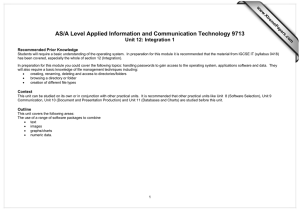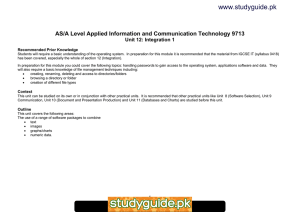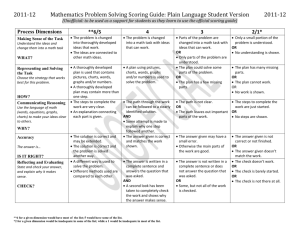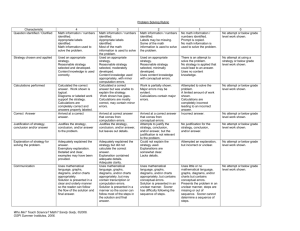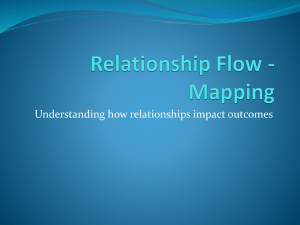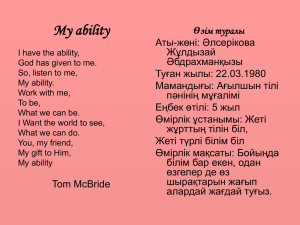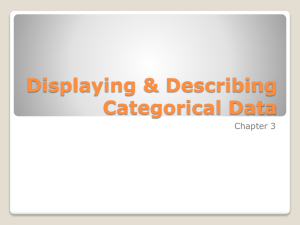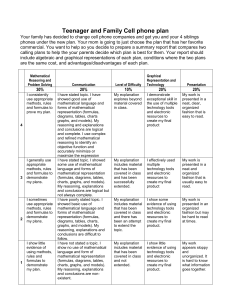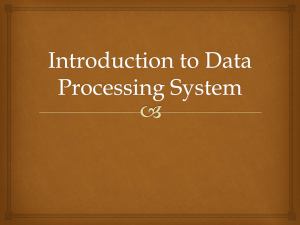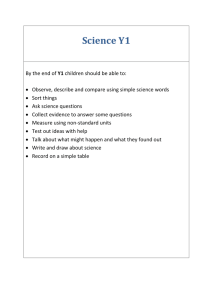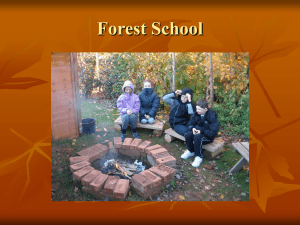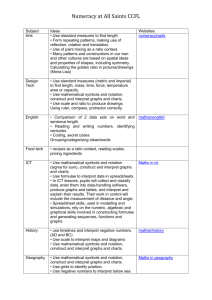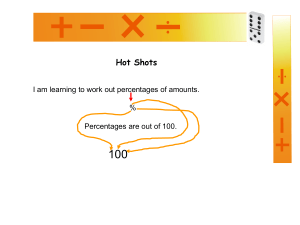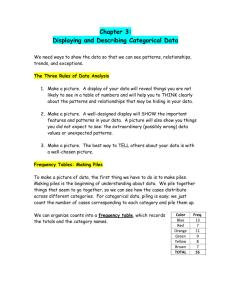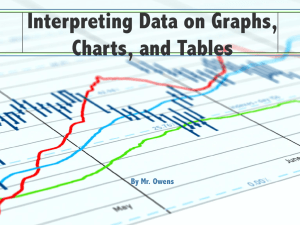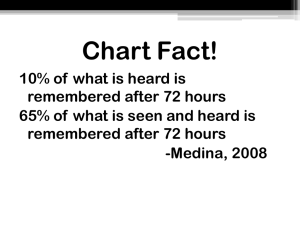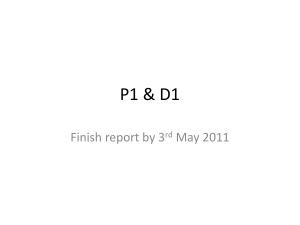PowerPoint Presentation - Why is mathematics important as a citizen?
advertisement
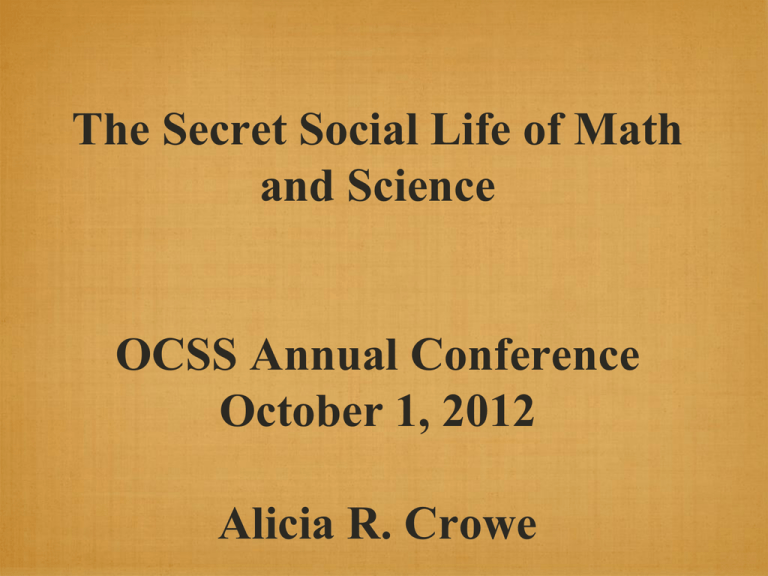
The Secret Social Life of Math and Science OCSS Annual Conference October 1, 2012 Alicia R. Crowe How we understand numeric and scientific information & how it is being used influences how we make decisions on issues that impact the quality of life of ourselves and others in our society Examples Understanding economic data Making decisions about what to do buy a house, sell your house, take out a loan Asking questions when encountering data Is this interest rate appropriate or is this predatory lending? Does the interest rate being lowered mean anything for my daily life? Examples Understanding scientific medical information Making decisions about whether the risk in taking a drug or a undergoing a new procedure is too great to proceed Making decisions about what types of food to eat Examples Understanding scientific medical information Making decisions about whether or not to support a ban on pesticides Should we limit fossil fuel use now? Is this study trustworthy? Examples Understanding polling data Asking critical questions about the way the poll was administered, who was sampled, and how the sampling occurred So you can determine how much to base your judgments on the poll. Basically, certain aspects of mathematics and science and mathematical and scientific ways of thinking are fundamental to understanding social studies concepts and becoming active members of society. So what can you do? • Start making science and mathematics a part of the class in many ways • But not just a sprinkle on top A Quick Activity Explore current news Look for instances where mathematical or scientific understandings could influence how you understand a current item in society Bringing the science into focus Mention the science connections more often Point out relationships among science, technology and society in what you already do Ask questions that help students see the connections between the science and the society Bringing the science into focus 7th grade ancient civilizations and science Salt Armor and weapons The Silk Road and the movement of ideas (scientific and mathematical not just religion, language and culture) What are some relationships between disease spread and what happens to societies? Understanding data is another place to start raw numeric data or numeric information in context; percentages in context; the meaning of average; the ability to interpret and question graphs and charts. How to begin Highlight the differences among numbers students read or numbers you present Ask questions that help students to see the raw number in a larger context, and Point out relationships between raw numbers and percentages when you use them or they are in the readings. Imagine this… • You’ve planned this great issues based week. • “Population Growth: Should we be concerned?” • Students explore some data and find that population growth has decreased over the last 40 years going from about 2% per year in 1960 to 1.5% in 1990 to an estimated 1% in 2015. You overhear this conversation… • “Well 2% to 1.5% to 1% sounds like it is better to me. • “No way, just because the percentage is going down doesn’t mean we shouldn’t care.” • So our social studies question could be what they are talking about, but could it be a mathematical misunderstanding. Add some information to the conversation from the beginning Currently the world has ~ 6,973,738,433 people (yes that’s billions) 1% of that ~ 69,737,384 Yes that’s 69.7 million A little over 6 Ohios Now, they can approach “if it is a problem” with an accurate sense of how big 1% is. Example As a beginning activity early in the year, you could provide your students with a set of questions to help them think about and discuss a current or historical news piece as part of a larger conversation about the content for the day. What do the numbers in this piece mean? How could they be represented differently? Where are the places that misunderstanding can take place as a result of the author’s use of numbers, percentages, or this chart or graph? Across the year you can start simple Problematize the textbook – Start by modeling questions such as: What does this data or chart really tell us? Does this scale distort the data? Is more information needed to more fully understand what is happening? Using data is another way to go Have students create charts and graphs to represent data they find or gather themselves. A common table of data An image from PBS: http://www.pbs.org/greatwar/resources/casdeath_pop.html Using data is another way to go Students create pie charts to represent the percentages and compare and contrast data from wars. They can add the population of the US during these time period to create pie charts that show percentage of population to compare as well. Explore others’ data Exploring the data that others have gathered and made visual can expand your students’ experiences GapMinder http://www.gapminder.org/ Collecting and interpreting themselves is yet another Exploring census records How has the population of the United States changed from 1790 – 1860? Gathering census data Choosing what to focus on (urban/rural, gender, race, income, occupation) Creating charts or graphs to represent the data Beginning to interpret what the data tells us about changes Begin to connect what is seen to events in time Creating and interpreting Develop a research question/topic that the class is interested in What school lunch does our school like the most and least? Develop an instrument. Gather data. Chart, graph, interpret. Conclude. Move to action Think about your classroom What are you teaching right now? What are ways that science, technology and society are a hidden part of what you already teach? Where is there math hidden that you can highlight? Thank you and keeping looking for the math and science that are hidden in our social studies. For your future references Fordham University’s “Internet Source Book of Science” and a lot of math too http://www.fordham.edu/halsall/science/s ciencesbook.asp BBC News and many other outlets have a science and environment section that often has articles that relate science and society in the past and the present.

